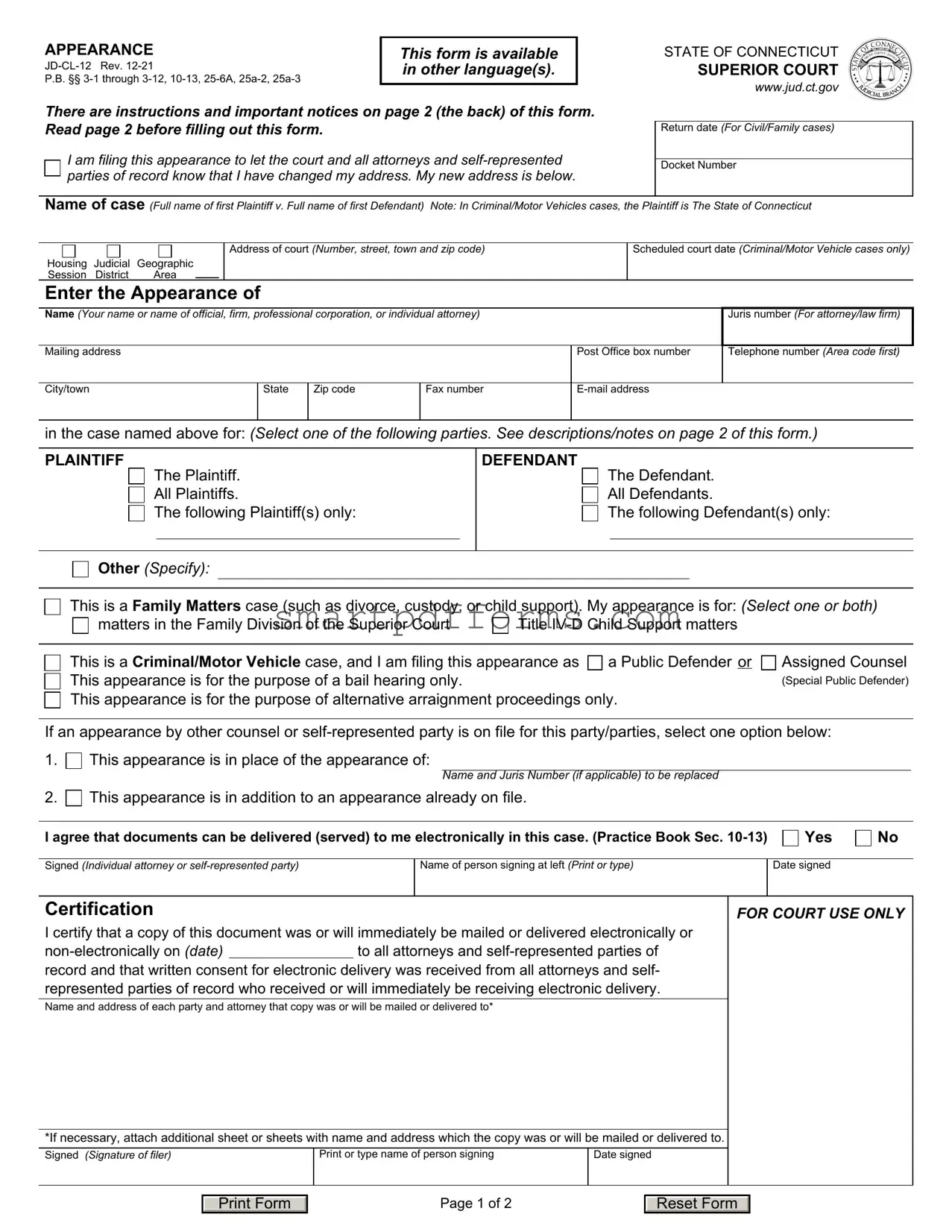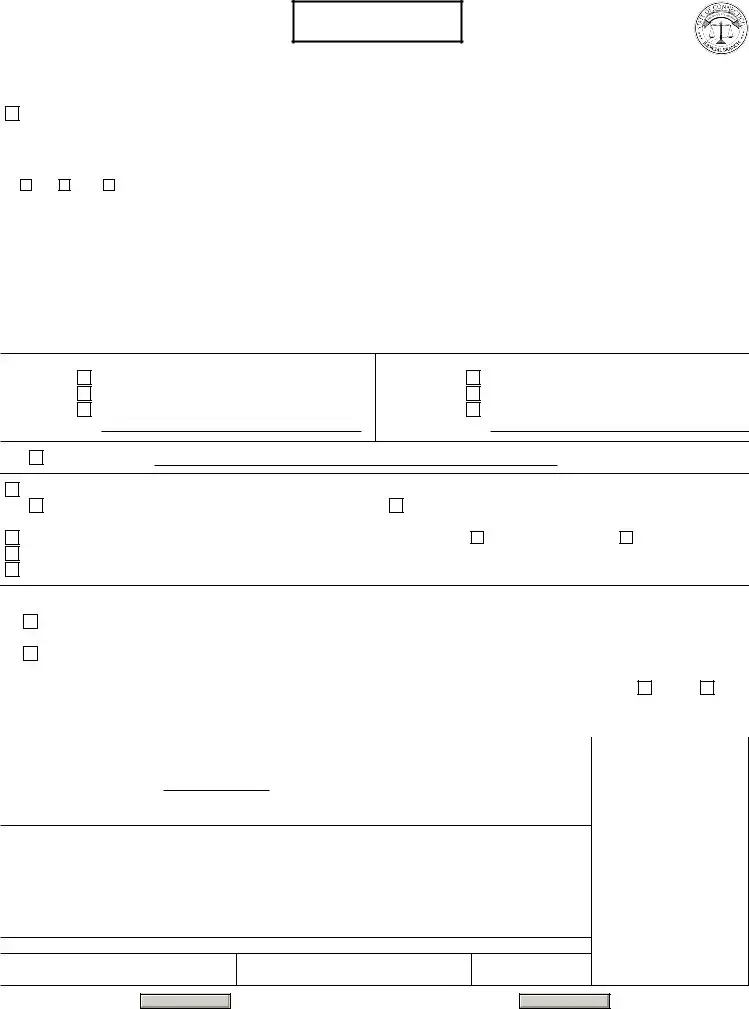Instructions
Do not use this form for Juvenile cases.
1.Type or print clearly in dark ink.
2.Fill out page 1, including the Certification section at the bottom.
3.Make a copy of the completed form and keep it for your records.
4.File your completed form with the court clerk.
5.For Criminal and Motor Vehicle cases: Mail or deliver a copy of the appearance to the prosecutor.
For all other cases: Mail or deliver a copy to all counsel and self-represented parties of record.
Notice for Civil cases, including Housing Matters and Small Claims
If a party who has been defaulted for failure to appear files an appearance before the entry of judgment after default, the default will automatically be set aside by the clerk.
Notice to people representing themselves
People who represent themselves in court are called self-represented parties.
Self-represented parties: Which party do I select on page 1?
You are a plaintiff if...
•You filed this court case to sue someone.
•You are the one who started this court case.
•Your name is listed before the "v." in the name of case on court documents. If you are the ONLY plaintiff, select "The Plaintiff".
If there is more than one plaintiff, select "The following Plaintiff(s) only" and write your name on the line.
You are a defendant if...
•This is a criminal or motor vehicle case.
•You are being sued.
•Your name is listed after the "v." in the name of case on court documents.
•Your landlord started this case to evict you.
•You were served with the court papers at the beginning of this case.
If you are the ONLY defendant select "The Defendant".
If there is more than one defendant, select "The following Defendant(s) only" and write your name on the line. Select Other...
•If you and your spouse filed a nonadversarial divorce, select "Other" and write if you are Petitioner A or Petitioner B on the line.
•If you asked the court to let you intervene and you are listed as an intervenor, select "Other" and then describe who you are.
•If you are listed as a party to the case for some other reason, select "Other" and write who you are in the case on the line.
Self-represented parties in Family Matters: Filing “in addition to” an attorney (dual representation)
If you are a self-represented party who is filing an appearance “in addition to” an attorney who already has an appearance in this court case, be aware of the following:
•Any document being filed on your behalf must be signed by your attorney pursuant to Practice Book Section 4-2.
•If a document being filed on your behalf is not signed by your attorney, the court may order that the matter be stayed (delayed) until the attorney adopts the document.
•If you inform the court that there is no attorney actively representing you, the court may delay the matter until you file a new appearance “in place of” your attorney(s).
•If your attorney does not adopt your motion and the motion is not disposed of or withdrawn:
•You are responsible for prosecuting or litigating that motion.
•An attorney for any other party on the case may contact you directly with respect to the subject matter of that motion.
•If multiple motions are scheduled for hearing at the same time, one or more of which have been adopted by your attorney and one or more of which have not, it is up to the court how to proceed.
•If you file any other document that is not signed by your attorney, it is up to the court how the document will be treated.
Self-represented parties: Address changes
If you are a self-represented party, you must give notice if your mailing address changes after you file an appearance.
You must tell the court and all attorneys and self-represented parties of record your new mailing address by filling out another appearance. Select the box at the top of page 1 of this form and fill out the rest of page 1 using your new mailing address.
Notice to attorneys/law firms
1.Except as noted below, if you are an attorney, you are not exempt from e-filing, and the file in this case is electronic, do not use this form. File your appearance in the E-filing system.
2.Notices from the court will be mailed to the address associated with your Juris Number. You cannot use this form to have the court mail notices to a different address.
3.If you are an attorney admitted pro hac vice or filing on behalf of a non-party, you must file this form on paper with the clerk.
ADA NOTICE
The Judicial Branch of the State of Connecticut complies with the Americans with Disabilities Act (ADA). If you need a reasonable accommodation in accordance with the ADA, contact a court clerk or an ADA contact person listed at www.jud.ct.gov/ADA.


